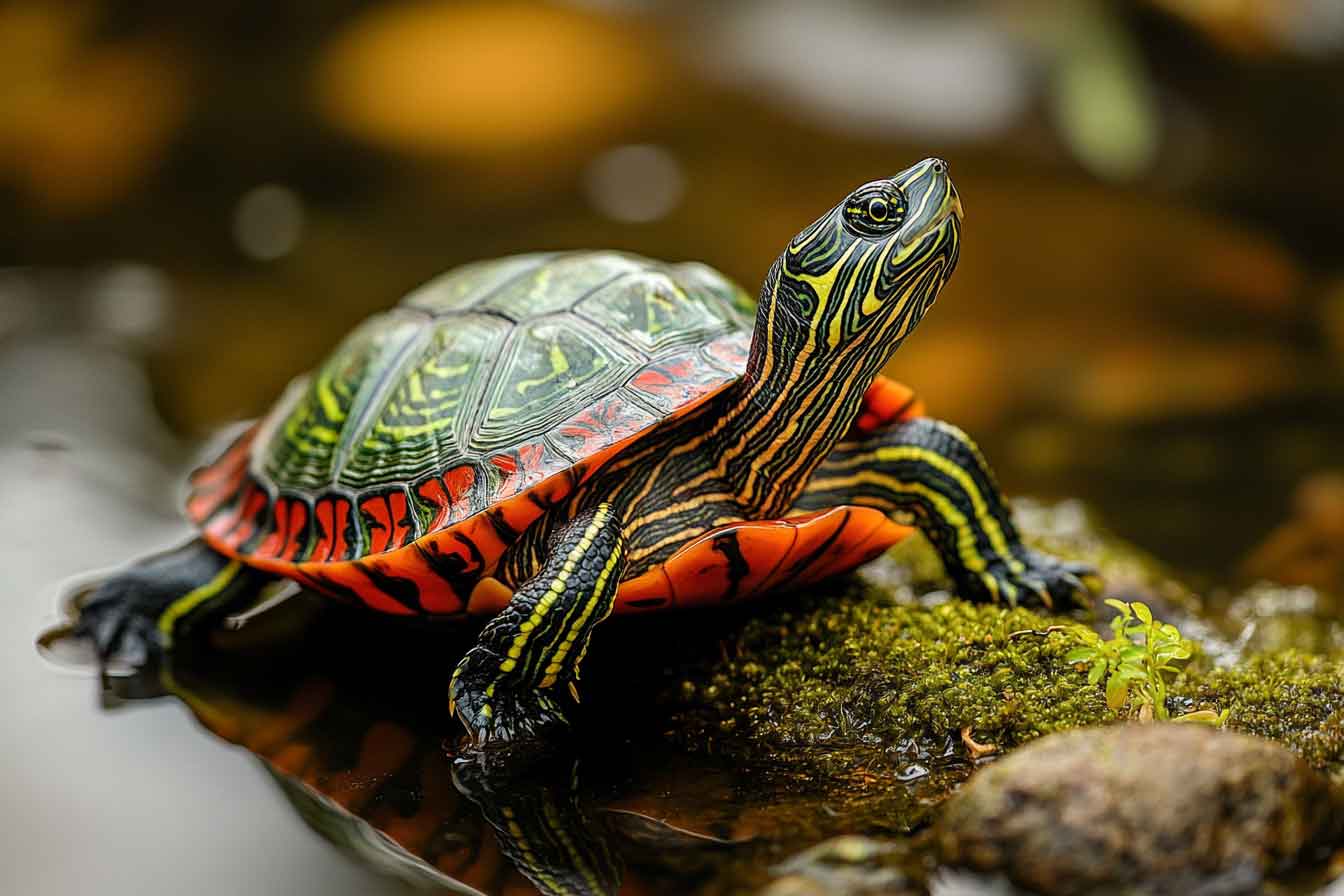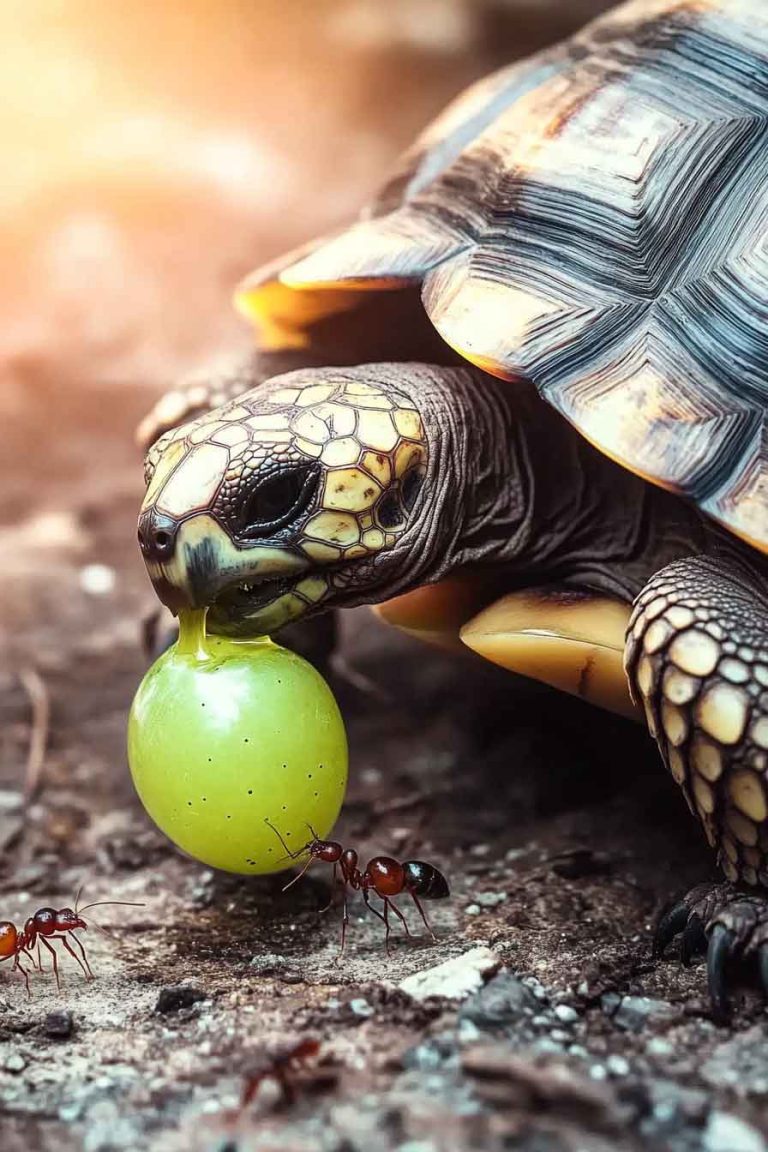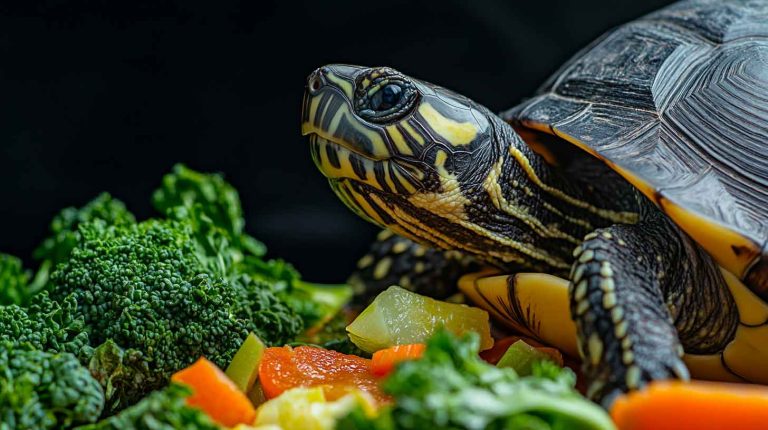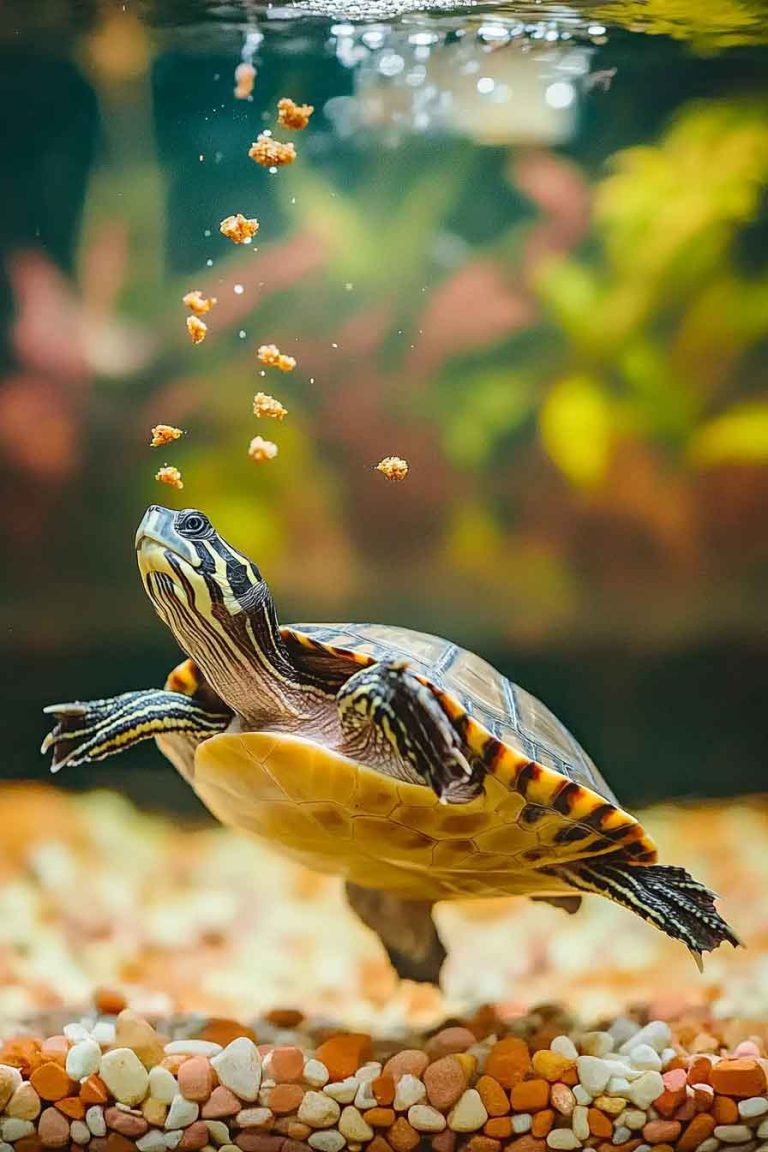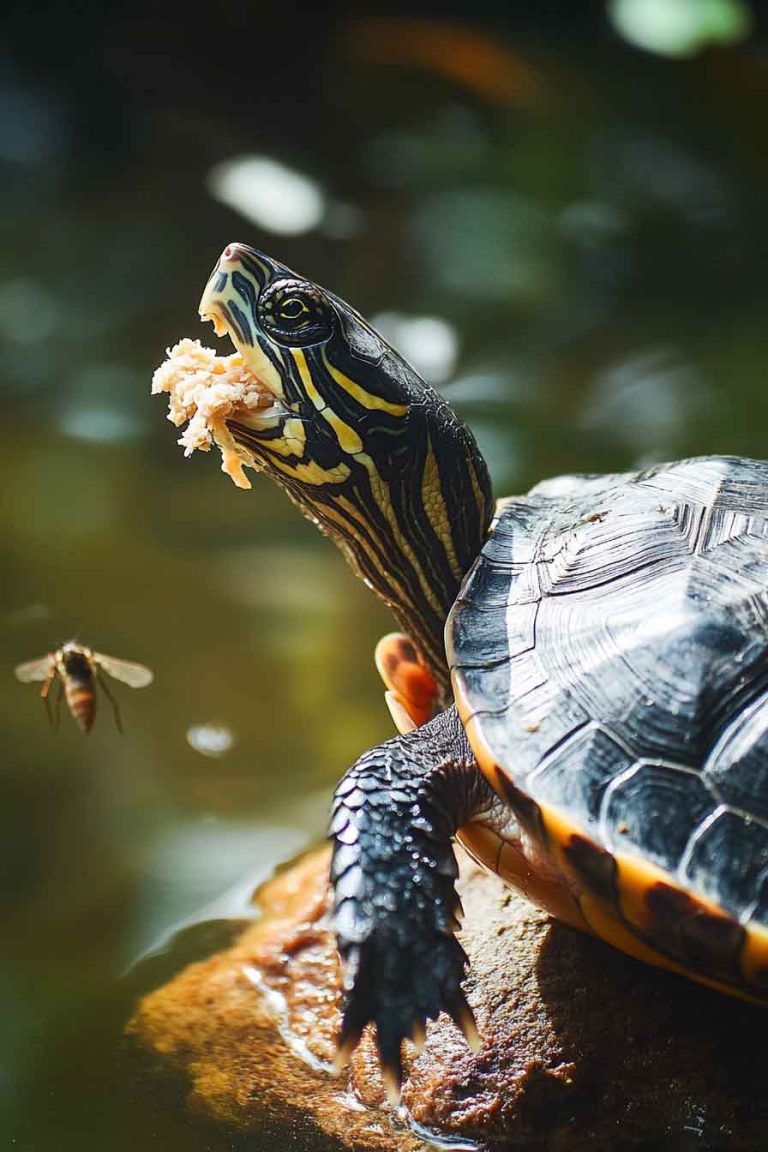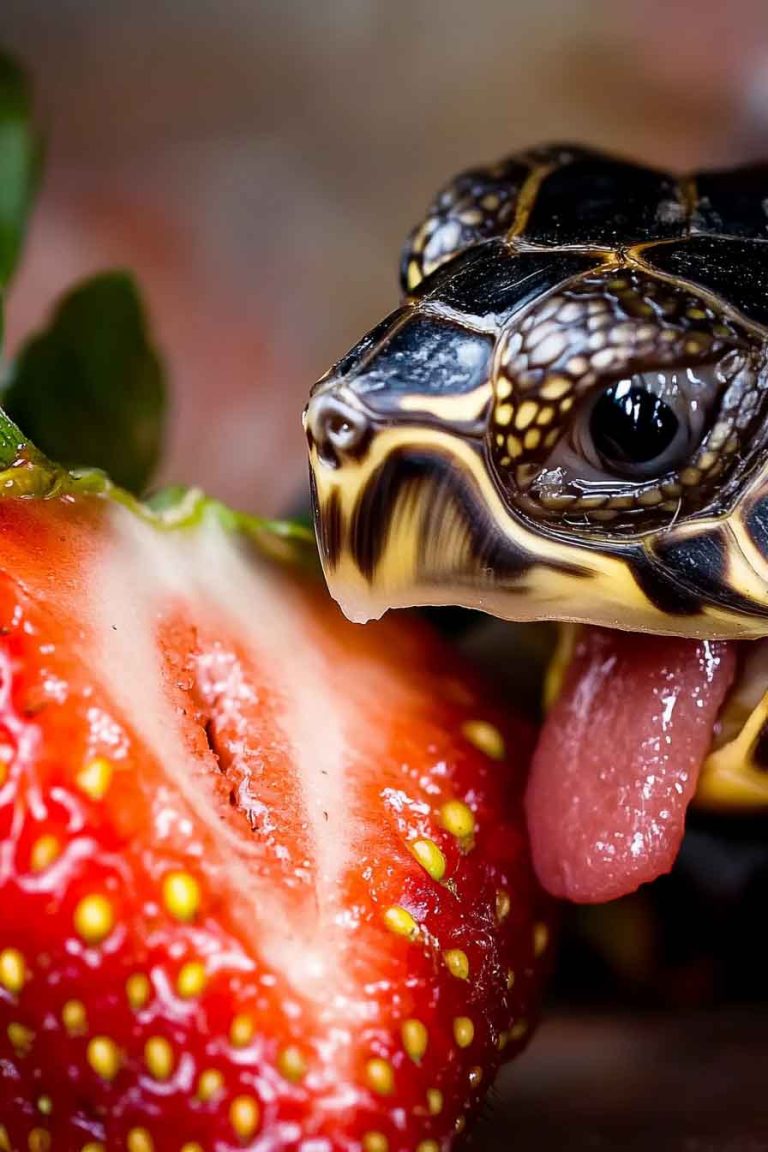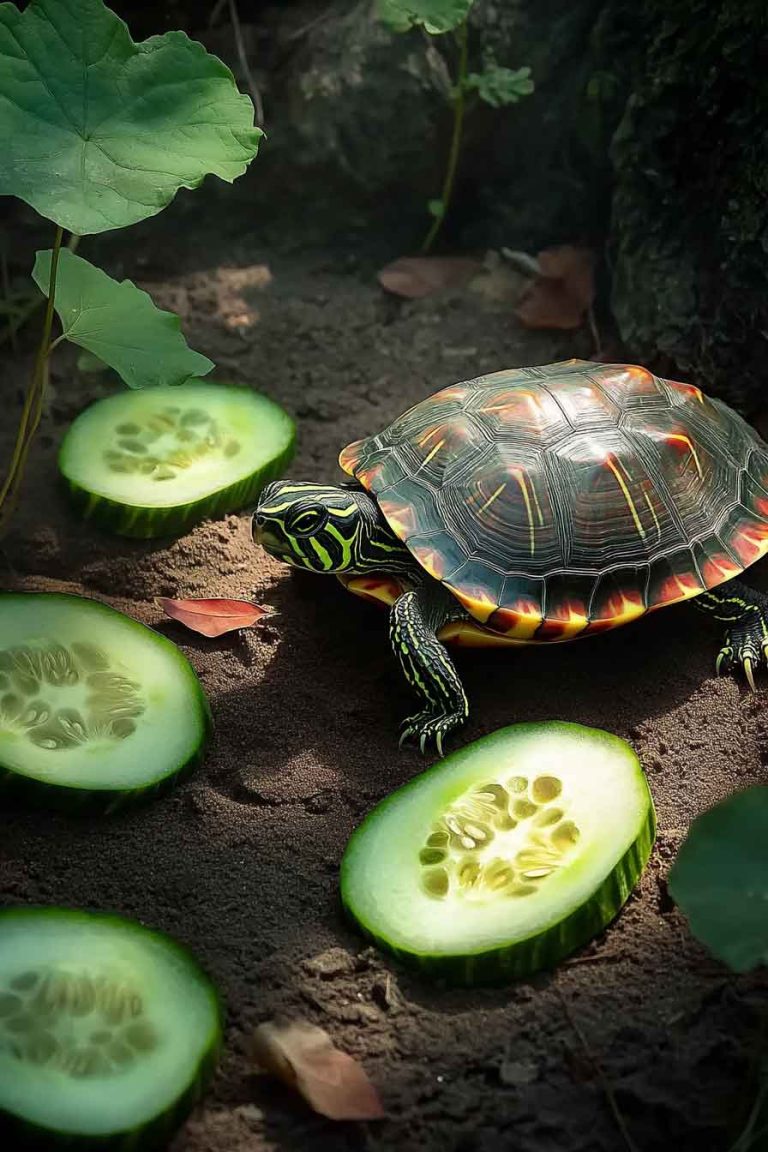What Do Red-Eared Slider Turtles Eat? Full Diet & Food Chart
If you’re a proud owner of a Red-Eared Slider turtle, I’m sure you’ve wondered about the best foods to keep your shelled friend healthy and happy. As someone who’s been caring for these amazing reptiles for years, I can tell you that proper nutrition is absolutely crucial for their well-being. Red-Eared Slider turtles are omnivores,…
If you’re a proud owner of a Red-Eared Slider turtle, I’m sure you’ve wondered about the best foods to keep your shelled friend healthy and happy. As someone who’s been caring for these amazing reptiles for years, I can tell you that proper nutrition is absolutely crucial for their well-being.
Red-Eared Slider turtles are omnivores, meaning they eat both plants and animals. In the wild, their diet consists of aquatic plants, small fish, insects, worms, and various vegetation. However, as a pet owner, you need to provide a balanced diet that mimics their natural feeding habits while ensuring they get all the nutrients they need.
In this comprehensive guide, I’ll walk you through everything you need to know about feeding your Red-Eared Slider turtle, including what they can eat, what to avoid, and how to create the perfect feeding schedule.
What Should Red-Eared Slider Turtles Eat?
Understanding the dietary needs of your Red-Eared Slider is essential for their long-term health. These turtles have different nutritional requirements depending on their age, with juveniles needing more protein than adults.
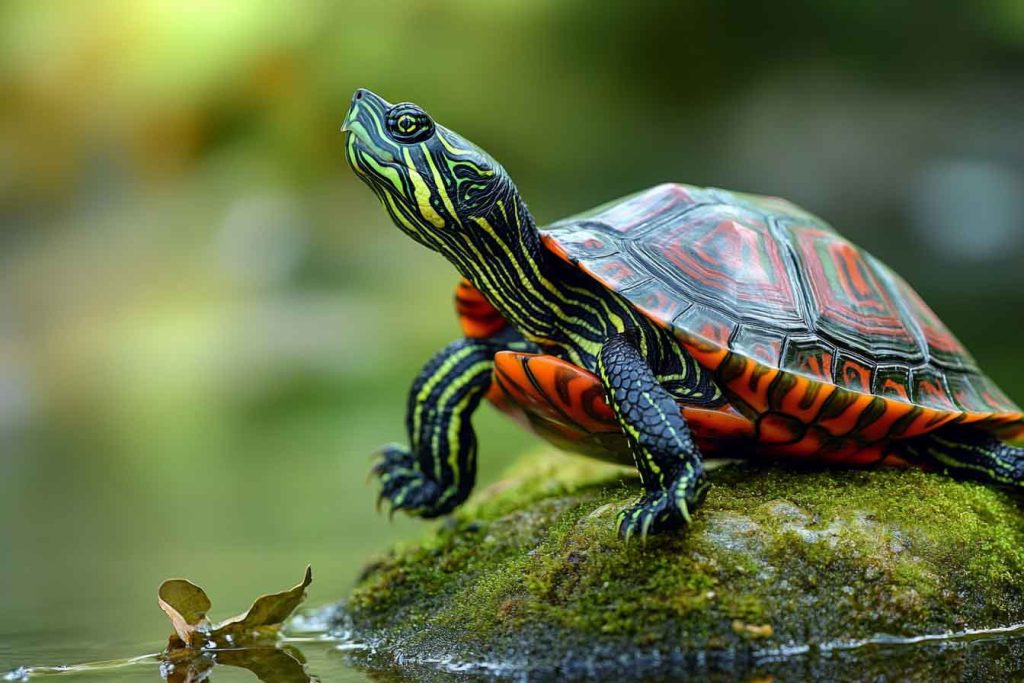
Protein Sources (50-70% for juveniles, 25-30% for adults)
Commercial Turtle Pellets High-quality turtle pellets should form the foundation of your Red-Eared Slider’s diet. I always recommend pellets specifically designed for aquatic turtles, as they contain the right balance of nutrients. Look for pellets that float on water, making it easier for your turtle to eat.
Live and Frozen Foods
- Crickets (gut-loaded for better nutrition)
- Mealworms (in moderation due to high fat content)
- Waxworms (as occasional treats)
- Bloodworms (frozen or live)
- Brine shrimp
- Small feeder fish (guppies, goldfish occasionally)
- Earthworms (excellent protein source)
Cooked Proteins
- Small pieces of cooked chicken (unseasoned)
- Cooked fish (remove all bones)
- Hard-boiled eggs (including the shell for calcium)
Vegetables (20-40% of diet)
Leafy Greens (Essential)
- Collard greens (my top recommendation)
- Mustard greens
- Dandelion greens
- Turnip greens
- Kale (sparingly)
- Romaine lettuce (not iceberg)
Other Vegetables
- Squash (butternut, acorn)
- Sweet potato (cooked)
- Carrots (shredded)
- Green beans
- Peas
- Bell peppers (red, yellow, green)
Fruits (5-10% of diet – treats only)
- Strawberries (remove tops)
- Blueberries
- Cantaloupe
- Watermelon (seedless)
- Grapes (cut in half)
- Apple slices (remove seeds)
Aquatic Plants
- Anacharis (Elodea)
- Water hyacinth
- Water lettuce
- Duckweed
- Java moss
Complete Food Chart for Red-Eared Slider Turtles
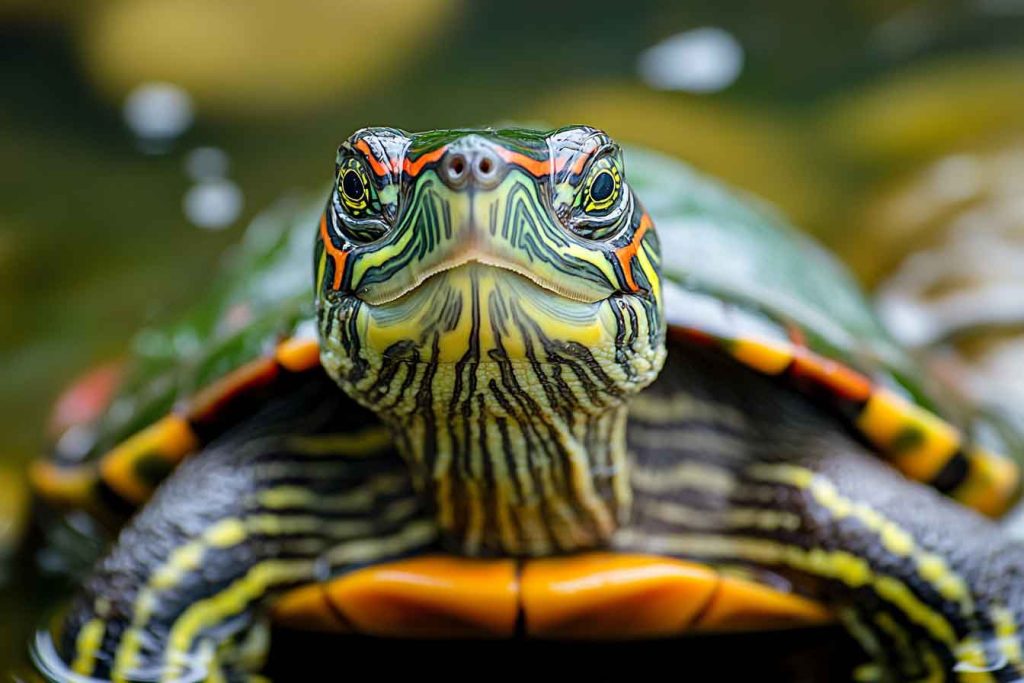
Safe Foods (Daily/Regular)
| Food Type | Examples | Frequency | Notes |
|---|---|---|---|
| Commercial Pellets | ReptoMin, Mazuri | Daily | Base diet |
| Leafy Greens | Collard, mustard greens | Daily | High calcium |
| Live Insects | Crickets, earthworms | 3-4x/week | Juveniles more |
| Aquatic Plants | Anacharis, duckweed | Daily | Natural behavior |
Treat Foods (Occasional)
| Food Type | Examples | Frequency | Notes |
|---|---|---|---|
| Fruits | Berries, melon | 1-2x/week | Small amounts |
| Fish | Guppies, minnows | 1x/week | Whole fish preferred |
| Cooked Protein | Chicken, eggs | 1x/week | Unseasoned only |
Foods to Avoid (Never Feed)
| Food Type | Why Dangerous |
|---|---|
| Iceberg lettuce | No nutritional value |
| Avocado | Toxic to reptiles |
| Chocolate | Toxic |
| Onions/Garlic | Causes anemia |
| Raw meat | Bacterial risk |
| Processed foods | Unhealthy additives |
Age-Specific Feeding Guidelines
Baby Red-Eared Sliders (Under 1 year)
Baby turtles grow rapidly and need a protein-rich diet. I recommend feeding them daily with a diet consisting of:
- 70% protein (pellets, small insects, bloodworms)
- 20% vegetables (finely chopped)
- 10% fruits (very small pieces)
Feeding Schedule: Once daily, as much as they can eat in 15-20 minutes
Juvenile Red-Eared Sliders (1-2 years)
As they grow, you can start reducing protein and increasing plant matter:
- 50% protein
- 30% vegetables
- 20% aquatic plants
Feeding Schedule: Every other day, 15-minute feeding sessions
Adult Red-Eared Sliders (2+ years)
Adult turtles need less protein and more vegetation:
- 25-30% protein
- 50% vegetables and aquatic plants
- 20% fruits and treats
Feeding Schedule: Every 2-3 days, or small amounts daily
How Much Should Red-Eared Slider Turtles Eat?
This is one of the most common questions I get from turtle owners. The general rule I follow is the “head method” – offer an amount of food equal to the size of your turtle’s head and neck. This prevents overfeeding while ensuring adequate nutrition.
Signs of Proper Feeding:
- Active swimming behavior
- Clear, bright eyes
- Steady growth (for juveniles)
- Regular basking
- Normal waste production
Signs of Overfeeding:
- Algae growth on shell
- Cloudy tank water
- Lethargy
- Pyramiding (abnormal shell growth)
Feeding Tips and Best Practices
Create a Feeding Schedule
I always recommend establishing a consistent feeding routine. Turtles thrive on predictability, and a regular schedule helps maintain their health and your tank’s water quality.
Vary the Diet
Don’t rely solely on commercial pellets. I like to rotate between different protein sources and vegetables to ensure my turtles get a wide range of nutrients.
Feed in Water
Red-Eared Sliders are aquatic turtles and prefer to eat in water. This also helps with digestion and prevents choking.
Remove Uneaten Food
Always remove any uneaten food after 20-30 minutes to prevent water contamination and bacterial growth.
Supplement When Necessary
If your turtle doesn’t get adequate UVB lighting, you may need calcium and vitamin D3 supplements. However, I always recommend consulting with a reptile veterinarian first.
Common Feeding Mistakes to Avoid
Feeding Only Pellets
While commercial pellets are convenient, they shouldn’t be the only food source. Wild Red-Eared Sliders have diverse diets, and captive ones should too.
Too Many Treats
I see many owners giving too many fruits and fatty foods. Remember, these should only make up a small portion of the diet.
Inconsistent Feeding
Irregular feeding schedules can stress your turtle and affect their health. Stick to a routine that works for both of you.
Wrong Food Sizes
Food pieces should be smaller than the space between your turtle’s eyes to prevent choking.
Health Considerations and Warning Signs
Nutritional Deficiencies
Calcium Deficiency Signs:
- Soft or deformed shell
- Lethargy
- Loss of appetite
- Difficulty swimming
Vitamin A Deficiency Signs:
- Swollen eyes
- Respiratory issues
- Poor appetite
- Skin problems
When to Consult a Veterinarian
If you notice any changes in eating habits, behavior, or appearance, don’t hesitate to contact a reptile veterinarian. Early intervention can prevent serious health issues.
Seasonal Feeding Adjustments
Red-Eared Sliders may eat less during cooler months, which is natural. Don’t force feeding if your turtle shows decreased appetite in winter, but continue offering food regularly.
Can Red-Eared Slider Turtles Eat Human Food?
This is a question I get asked frequently. While some human foods are safe (like the vegetables and fruits I mentioned), most should be avoided. Never feed your turtle:
- Processed foods
- Foods high in salt or sugar
- Dairy products
- Bread or grains
- Spicy foods
- Anything with preservatives or additives
Setting Up a Feeding Station
I recommend creating a designated feeding area in your turtle’s habitat. This makes cleanup easier and helps establish routine. Some owners prefer using a separate feeding tank to keep the main habitat cleaner.
Conclusion
Feeding your Red-Eared Slider turtle properly is one of the most important aspects of turtle care. By providing a varied, balanced diet that includes high-quality pellets, fresh vegetables, appropriate proteins, and occasional treats, you’ll help ensure your turtle lives a long, healthy life.
Remember, every turtle is an individual, and you may need to adjust their diet based on their specific needs, age, and health status. When in doubt, always consult with a reptile veterinarian who can provide personalized advice for your shelled friend.
I hope this comprehensive guide helps you provide the best nutrition for your Red-Eared Slider turtle. With proper diet, care, and attention, these amazing creatures can be wonderful companions for many years to come. Happy turtle keeping!

